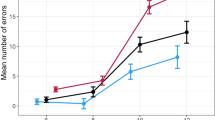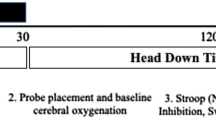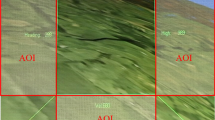Abstract
High G forces affect cognitive functions. Withstanding to the negative effects of G forces is positively correlated with pilots’ readiness and countermeasures that were taken against. Therefore, factors that decrease resistance to G-forces will increase G induced cognitive impairment. Changes in blood pressure affect the cerebral perfusion and disrupt high cortical functions. We investigated the negative effects of acceleration forces on cognitive functions via Time Wall Psychometric Tests which were applied to pilots before and after Human Centrifuge Training. Positive correlation of pilot’s height with PsAc (Post Training Accuracy) (P˂0.05), PsMAP (Post-Training Mean Arterial Pressure) with pilot’s ages (P˂0.05) and flight times (P˂0.01) were showed in our study. PsMAP values were lower than Pre-Training Mean Arterial Pressure values in younger aged (P˂0.001) and lower flight hour pilots (P˂0.01). PsAc values were higher than PrAc (Pre-Training) values within the younger aged pilots’ group (P˂0.05). Between age’s groups analyzes showed that, PsAc values of older aged group were found to be lower than younger aged group (P˂0.05). PsAc values were more affected in lower flight hour and taller pilots’ group (P > 0.05). In our study, cognitive functions are less affected in older aged and more experienced pilots. Height was considered to influence G tolerance but provided small contributions. We concluded that cardiovascular changes are held responsible for the cognitive dysfunctions caused by +Gz exposure. Increased pilot’s ability to recognize of acceleration forces and knowing how to cope with it, results in increased adaptation to G forces over the years.
Similar content being viewed by others
References
Banks RD., Brinkley JW., Allnutt R., Harding RM.: Human response to acceleration. In: David JR., Johnson R., Stepanek J., Fogarty JA., (eds.) Fundamentals of Aerospace Medicine, 4th Ed. pp. 90–95 Lippincott Williams & Wilkins, Philadelphia (2008)
Barratt M. Space physiology and medicine. In: Gradwell D.P, Rainford D.J., (eds.) Ernsting’s Aviation Medicine, 5th Ed. pp.323–354 Taylor & Francis Group LLC, New York (2016)
Berry, N.M., Rickards, C.A., Newman, D.G.: Acute cardiovascular adaptation to 10 consecutive episodes of head-up tilt. Aviat. Space Environ. Med. 77(5), 494–499 (2006a)
Berry, N.M., Rickards, C.A., Newman, D.G.: Squat-stand test response following 10 consecutive episodes of head-up tilt. Aviat. Space Environ. Med. 77(11), 1125–1130 (2006b)
Clément G. Introduction to Space Life Sciences, 1.2 The Space Environment. In: Wertz J.R.,(eds.) Fundamentals of Space Medicine, pp.4–6 Springer, Holland (2005a)
Clément G. The cardio-vascular system in space. 3 Effects of Spaceflight on the Cardiovascular System. In: Wertz J.R., (eds.) Fundamentals of Space Medicine. pp.149–159 Springer, Holland (2005b)
Frett, T., Petrat, G., Van Loon, J., Hemmersbach, R., Anken, R.: Hypergravity facilities in the ESA ground-based facility program – current research activities and future tasks. Microgravity Science and Technology. 28, 205–214 (2016)
Gillingham, K.K., Schade, C.M., Jackson, W.G., Gilstrap, L.C.: Women's G tolerance. Aviat. Space Environ. Med. 57(8), 745–753 (1986)
Green N.D.C. Long duration acceleration. In: Gradwell D.P, Rainford D.J., (eds.) Ernsting’s Aviation Medicine, 5th Ed. pp.131–156Taylor & Francis Group, LLC, New York (2016)
Hall J.E, Guyton C.A. Guyton and hall textbook of medical physiology 13rd Ed. pp.219–221 Elsevier, Philadelphia (2016)
Newman, D.G., Callister, R.: Flying experience and cardiovascular response to rapid head-up tilt in fighter pilots. Aviat. Space Environ. Med. 80(8), 723–726 (2009)
Park, M., Yoo, S., Seol, H., Kim, C., Hong, Y.: Unpredictability of fighter pilots' G duration tolerance by anthropometric and physiological characteristics. Aerosp Med Hum Perform. 86(4), 397–401 (2015)
Slungaard, E., McLeod, J., Green, N.D.C., Kiran, A., Newham, D.J., Harridge, S.D.R.: Incidence of G-induced loss of consciousness and almost loss of consciousness in the Royal air Force. Aerosp Med Hum Perform. 88(6), 550–555 (2017)
Stevenson, A.T., Scott, J.P., Chiesa, S., Sin, D., Coates, G., Bagshaw, M., et al.: Blood pressure, vascular resistance, and Gz tolerance during repeated +Gz exposures. Aviat. Space Environ. Med. 85(5), 536–542 (2014)
Van Loon, J.: The human centrifuge. Microgravity Sci. Technol. 21, 203–207 (2009)
Whinnery JE. +Gz tolerance correlation with clinical parameters. Aviat Space Environ Med. 50(7), 736–741 (1979)
Author information
Authors and Affiliations
Corresponding author
Additional information
Publisher’s Note
Springer Nature remains neutral with regard to jurisdictional claims in published maps and institutional affiliations.
Rights and permissions
About this article
Cite this article
Ercan, E., Gunduz, S.H. The Effects of Acceleration Forces on Cognitive Functions. Microgravity Sci. Technol. 32, 681–686 (2020). https://doi.org/10.1007/s12217-020-09793-0
Received:
Accepted:
Published:
Issue Date:
DOI: https://doi.org/10.1007/s12217-020-09793-0




